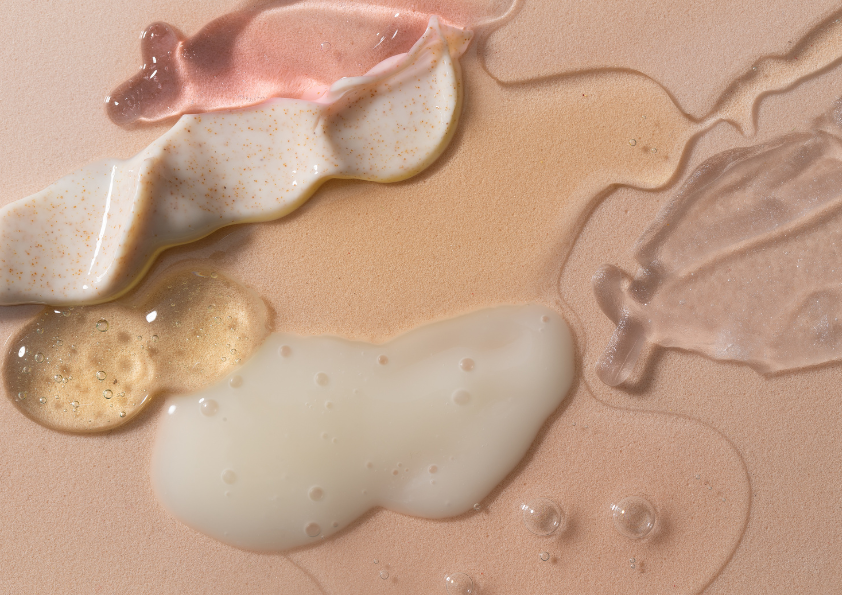The Biggest Skincare Ingredients of 2025, According to Industry Insiders

Privy to the latest developments long before we get a look in, it’s the individuals behind the brand—from chief product officers to educators and trainers—who are the unsung custodians of the professional beauty industry. So, who better to consult about the biggest skincare ingredients for 2025 than the industry insiders themselves? While they remain tight-lipped about what’s to come, they share their predictions below for the ingredients they anticipate will be everywhere next year. Take from this what you will…
MiniProteins
“Being hailed as the next generation of peptide technology, MiniProteins are small but mighty. They slot in at the interface between peptides and proteins, taking on both characteristics for double the benefits. Their small size makes them similar to peptides in terms of bioavailability and penetration into the skin; however their ability to fold into a complex 3D structure allows them to fit into receptors and therefore gives them protein-like potency. This means, they are way more powerful than peptides due to their ability to penetrate the skin barrier and reach their target cells more effectively.”

Tripeptide-1 (Copper Tripeptide-1)
“Tripeptide-1 is an exciting ingredient within the iS Clinical range, and it’s one to watch in 2025. It is a growth factor analog that mimics natural growth factors and was initially mistaken for one when it was discovered due to its bio-identical form. Composed of three amino acids plus copper, Tripeptide-1 promotes collagen production within fibroblasts, enhancing the skin’s resilience and promoting a youthful appearance. It’s part of a group of molecules in the body called emergency-response molecules that are used for healing and regeneration. With anti-inflammatory and antimicrobial properties, Tripeptide-1 is also clinically proven to help diminish signs of premature ageing and helps to visibly reduce the appearance of wrinkles over time. As a small molecule, it easily penetrates the skin, making it ideal for cosmeceutical products.”

Retinol
“Retinol is one of the most frequently used active ingredients in cosmetic and aesthetic treatments, based on its widely proven efficacy in many skin conditions, including skin photoaging, hyperpigmentation, and acne vulgaris. The new European Union regulations (Commission Regulation (EU) 2024/996) have reduced the maximum allowed dose of retinol and its derivatives in cosmetic products in order to avoid adverse effects such as redness or irritation, typically associated with the use of high-strength doses of retinoids. This new scenario puts pressure on what the final consumer is demanding: products that meet the regulation requirements and have proven safety while keeping the efficacy of retinol. Next year, we will see which products can fulfil this challenge. Products that include retinol in their formulas, combined with other active ingredients that boost retinol’s action (the so-called retinol-like ingredients) while including actives that calm retinol’s adverse effects, will play a key role in the cosmetic and medical aesthetic market.”

Astaxanthin
“With consumer trends moving away from “anti-ageing” and towards longevity and wellbeing, we can expect to see the phenomena of super skin food technology continue to grow in 2025. Astaxanthin derived from microalgae is an emerging powerful antioxidant that delivers far more than a traditional free radical neutraliser with its capabilities expanding to also promote skin repair with its regenerative benefits, reduce hyperpigmentation, promote skin firmness and elevate overall skin radiance. It is a must-have super skin food that will power up skin health, wellness and vitality.”

Niacinamide B3
“While Niacinamide has been around for a while, it has grown from strength to strength and is now not only found in skincare but also included in sunscreens and makeup due to the multi-tasking action of this ingredient. Niacinamide helps with calming and strengthens the skin barrier which helps with boosting and locking in hydration but on the other spectrum reduces excess oils, targets pores and rough skin, and even treats pigmentation and uneven skin tone making it perfect for darker acne scarring.”
Retinal
“Retinal is fairly new to the retail market but watch this space. Retinal performs close to Retin A so it is perfect for treating not only collagen loss but also targeting thin and “saggy” skin, especially around the lower face and neck area, without the need for a prescription. SPF is a must with this ingredient!”

Tetrahexyldecyl Ascorbate
Also known as THD Ascorbate, this highly effective, stable form of oil-soluble Vitamin C is more bioavailable to the skin than other forms of Vitamin C, allowing it to be absorbed easily and with minimal irritation. It has been proven to brighten and fight visible signs of aging, such as fine lines, wrinkles, and pigmentation. It is a great tyrosinase inhibitor and can be used effectively for calming the melanocytes. Additionally, it has been shown to synthesize collagen more effectively than L-ascorbic acid. As a powerful antioxidant, it helps to protect cells by fighting free radical damage. This ingredient is gaining momentum in skincare and is expected to continue its upward trend, with growing consumer demand for effective, science-backed ingredients. As people seek products that show real visible results, THD Ascorbate fits perfectly due to its high efficacy and stability. THD Ascorbate is ideal for both preventative and corrective care.

